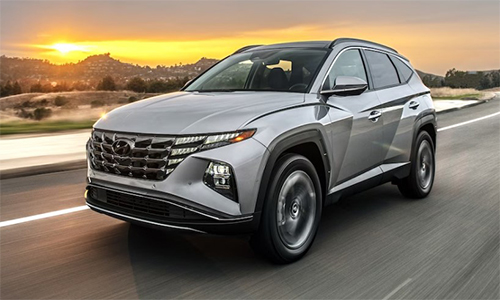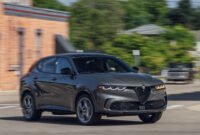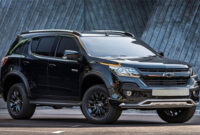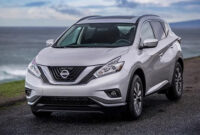The automotive industry is rapidly shifting towards more sustainable and environmentally-friendly technologies. Among the frontrunners in this transition is Hyundai, with its innovative Tucson Plug-in Hybrid (PHEV). Combining the benefits of a traditional internal combustion engine with the advantages of an electric motor, the Hyundai Tucson PHEV offers a unique driving experience that prioritizes efficiency, performance, and sustainability.
This article delves into the various aspects of the Hyundai Tucson Plug-in Hybrid, exploring its features, performance, design, and the overall driving experience it offers.
Introduction to the Hyundai Tucson Plug-in Hybrid

The Hyundai Tucson Plug-in Hybrid represents the latest in Hyundai’s commitment to producing eco-friendly vehicles without compromising on performance or luxury. As part of Hyundai’s ambitious plan to expand its electric and hybrid vehicle lineup, the Tucson PHEV plays a crucial role in making sustainable driving more accessible and appealing to a broader audience.
Key Specifications
- Engine: 1.6-liter Turbo GDI 4-cylinder
- Electric Motor: 66.9 kW (90 hp)
- Combined Power Output: 261 hp
- Battery Capacity: 13.8 kWh lithium-ion polymer battery
- Electric Range: Up to 33 miles (53 km) on a full charge
- Fuel Economy: Approximately 80 MPGe (miles per gallon equivalent)
- Charging Time: About 2 hours with a Level 2 charger
Design and Aesthetics
Read more : Honda CR-V Hybrid: The Ultimate Guide to Honda’s Eco-Friendly SUV

Exterior Design
The Hyundai Tucson Plug-in Hybrid boasts a bold and dynamic design that sets it apart from other SUVs in its class. Its exterior features a striking front grille, sharp LED headlights, and a sleek, aerodynamic profile that enhances both aesthetics and efficiency. The robust wheel arches and alloy wheels add a touch of ruggedness, while the integrated roof rails and panoramic sunroof provide both functionality and style.
Interior Design
Inside, the Tucson PHEV offers a spacious and luxurious cabin designed to provide maximum comfort and convenience. High-quality materials, including soft-touch surfaces and premium upholstery, create a sophisticated atmosphere. The ergonomic design ensures that all controls are easily accessible, while the ample legroom and cargo space make it a practical choice for families and adventurers alike.
Technology and Infotainment
The Tucson Plug-in Hybrid is equipped with state-of-the-art technology to enhance the driving experience. The centerpiece of the dashboard is a large, high-resolution touchscreen that serves as the interface for the infotainment system, which includes Apple CarPlay, Android Auto, and navigation. Additionally, the digital instrument cluster provides real-time information on vehicle performance, battery status, and driving range.
Performance and Efficiency
Read more : Volkswagen ID.7: A Deep Dive into Its Design and Technology

Hybrid Powertrain
At the heart of the Hyundai Tucson Plug-in Hybrid is its advanced hybrid powertrain. The combination of a 1.6-liter turbocharged gasoline engine and a powerful electric motor delivers a total system output of 261 horsepower, ensuring brisk acceleration and smooth power delivery. The hybrid system seamlessly switches between the electric motor and the gasoline engine to optimize efficiency and performance based on driving conditions.
Electric-Only Mode
One of the standout features of the Tucson PHEV is its ability to drive in electric-only mode for short distances. With a fully charged battery, drivers can enjoy up to 33 miles of zero-emission driving, making it ideal for city commutes and short trips. This not only reduces fuel consumption but also contributes to lower emissions, making it an eco-friendly option for everyday driving.
Fuel Economy
The Hyundai Tucson Plug-in Hybrid excels in fuel efficiency, achieving an impressive 80 MPGe. This remarkable fuel economy is a result of the synergy between the gasoline engine and the electric motor, which work together to minimize fuel consumption and maximize energy recovery during braking and coasting.
Driving Experience
Read more : Chevrolet Equinox EV: A New Era of Electric Driving

Smooth and Quiet Ride
The Tucson PHEV offers a smooth and quiet ride, thanks to its well-tuned suspension and advanced noise insulation. The electric motor operates silently, while the gasoline engine engages seamlessly when needed, providing a refined driving experience. The transition between electric and hybrid modes is virtually imperceptible, ensuring a comfortable journey for all passengers.
Handling and Stability
Hyundai has engineered the Tucson Plug-in Hybrid to deliver confident handling and stability on various road conditions. The low center of gravity, achieved by placing the battery pack beneath the floor, enhances stability and reduces body roll during cornering. The all-wheel-drive system further improves traction and control, making it a capable performer in different weather conditions and terrains.
Regenerative Braking
An integral feature of the Tucson PHEV is its regenerative braking system, which helps to recharge the battery while driving. When the driver applies the brakes or decelerates, the electric motor acts as a generator, converting kinetic energy into electrical energy and storing it in the battery. This not only extends the electric driving range but also improves overall efficiency.
Safety Features

Advanced Driver Assistance Systems (ADAS)
Safety is a top priority for Hyundai, and the Tucson Plug-in Hybrid is equipped with a comprehensive suite of advanced driver assistance systems. These include:
- Forward Collision-Avoidance Assist (FCA): Detects potential collisions and applies the brakes if necessary.
- Lane Keeping Assist (LKA): Helps keep the vehicle centered in its lane.
- Blind-Spot Collision Warning (BCW): Alerts the driver to vehicles in the blind spot.
- Rear Cross-Traffic Collision Warning (RCCW): Warns of approaching traffic when reversing.
Passive Safety Features
In addition to its active safety systems, the Tucson PHEV features a robust structure designed to protect occupants in the event of a collision. Multiple airbags, including front, side, and curtain airbags, provide comprehensive protection, while features like electronic stability control (ESC) and anti-lock braking system (ABS) enhance control and stability.
Environmental Impact

Reduced Emissions
The Hyundai Tucson Plug-in Hybrid significantly reduces greenhouse gas emissions compared to traditional gasoline-powered vehicles. By driving in electric-only mode for short distances, drivers can minimize their carbon footprint and contribute to cleaner air. The hybrid system also ensures that the gasoline engine operates at its most efficient, further reducing emissions.
Energy Efficiency
The energy efficiency of the Tucson PHEV is a testament to Hyundai’s commitment to sustainability. The regenerative braking system and intelligent power management maximize energy recovery and utilization, making it one of the most efficient vehicles in its class. Additionally, the use of renewable energy sources for charging the battery can further enhance its environmental benefits.
Ownership Experience

Cost of Ownership
The Hyundai Tucson Plug-in Hybrid offers a compelling cost of ownership proposition. The improved fuel economy and reduced reliance on gasoline can lead to significant savings on fuel costs over time. Additionally, many regions offer incentives and rebates for purchasing hybrid and electric vehicles, which can offset the initial purchase price.
Maintenance and Reliability
Hyundai has a reputation for building reliable vehicles, and the Tucson PHEV is no exception. The hybrid powertrain components are designed for durability and longevity, while the overall build quality ensures minimal maintenance issues. Hyundai’s comprehensive warranty coverage provides peace of mind to owners, further enhancing the ownership experience.
Charging Infrastructure
As the popularity of electric and hybrid vehicles grows, so does the availability of charging infrastructure. Owners of the Tucson Plug-in Hybrid can take advantage of an expanding network of public charging stations, as well as the convenience of home charging. A Level 2 home charger can fully charge the battery in about two hours, making it easy to keep the vehicle ready for electric driving.
Conclusion
The Hyundai Tucson Plug-in Hybrid represents the future of sustainable driving, offering a perfect blend of performance, efficiency, and environmental responsibility. Its advanced hybrid powertrain, luxurious design, and cutting-edge technology make it a standout choice for those seeking an eco-friendly SUV without compromising on style or comfort. With its impressive fuel economy, reduced emissions, and enjoyable driving experience, the Tucson PHEV is poised to lead the way in the transition to greener transportation.
By choosing the Hyundai Tucson Plug-in Hybrid, drivers can enjoy the benefits of both electric and gasoline power, making it an ideal choice for a wide range of driving needs. Whether it’s daily commuting, weekend getaways, or long road trips, the Tucson PHEV delivers a versatile and rewarding driving experience that aligns with the growing demand for sustainable mobility.




